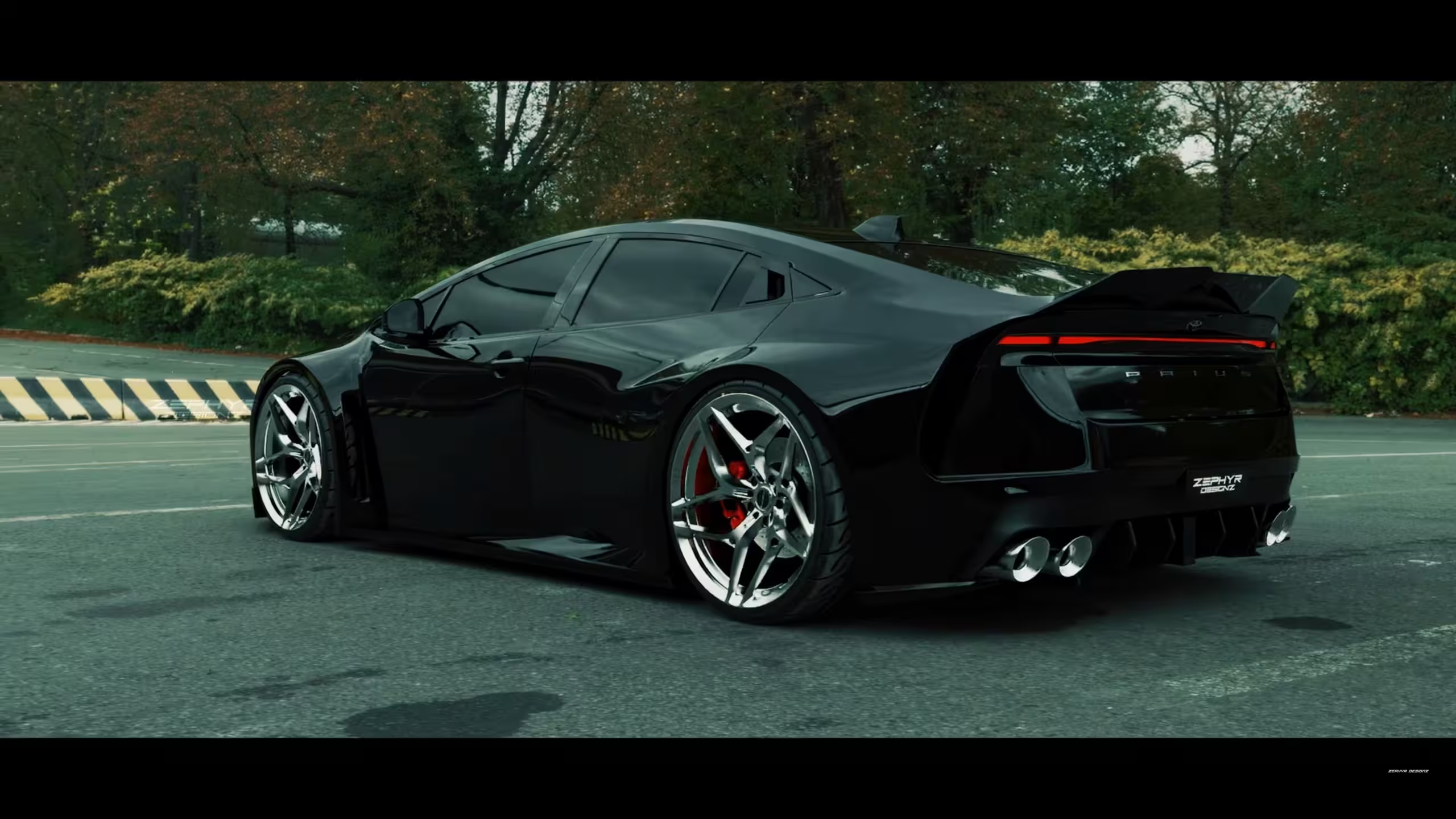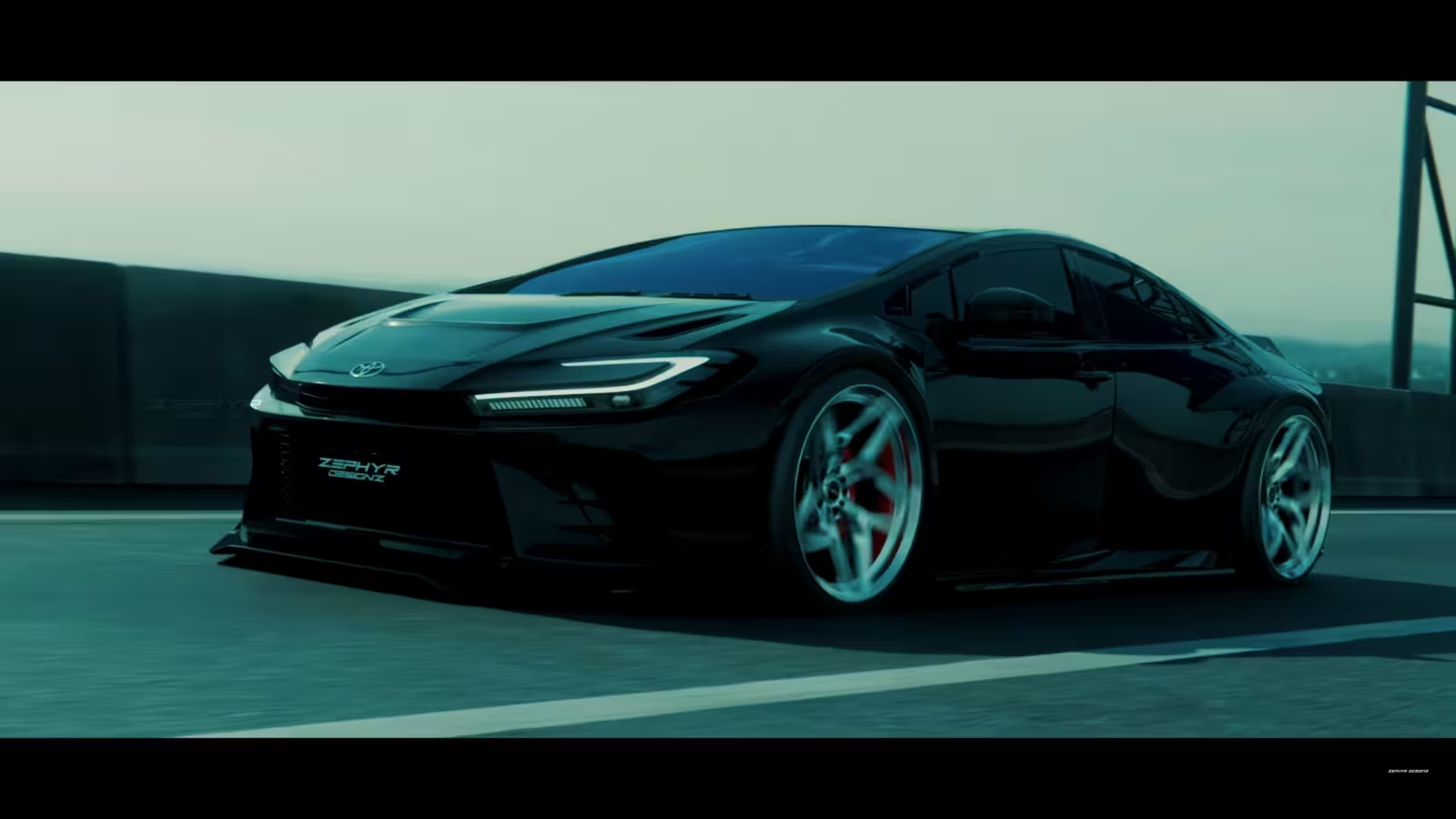4 Minutes
Overview: From Practical Hybrid to Shock-Value Concept
The fifth-generation Toyota Prius has been on sale for almost three years and, for many buyers, represents the pinnacle of efficient hybrid design. Yet one digital rendering artist disagrees — and responded by creating a radical CGI alternative that reimagines the Prius as a high-performance, aggressive tuner car. While opinions on aesthetics are subjective, the virtual conversion is worth examining for enthusiasts interested in automotive design, tuning culture, and concept performance upgrades.
Design: What the CGI Prius Changes
Exterior makeover and aero upgrades
The rendered Prius departs dramatically from the production model. Beyond the familiar front and rear fascia cues, the artist applied a widebody kit, arched front and rear windscreens, and beefed-up side skirts. New bumpers, a pronounced ducktail spoiler, and a variety of vents give the car a more muscular, track-inspired stance without tipping into caricature. The body is finished in gloss black with privacy glass all around for a stealthy look.
Wheels, brakes and suspension
Large chrome-look alloys hide uprated brakes with red calipers, signaling improved stopping power. The ride height is significantly lowered, suggesting a revised chassis setup — most likely achieved in the tuning world via adjustable air suspension to allow on-demand lifting and lowering for daily practicality and show-stance flexibility.
Performance: What the Visual Cues Suggest
Although the CGI project is purely visual, several styling elements imply a potent powertrain. Quad exhaust tips at the rear hint at a multi-cylinder combustion engine or a high-output hybrid conversion. The render also recalls a recent CGI Tesla Roadster concept from the same artist that imagined a V10 5.2-liter engine with electric assistance — so it’s reasonable to assume this Prius fantasy could be envisioned with anything from an aggressive turbocharged four-cylinder to a hypothetical V10-hybrid package. In short: the design communicates performance far beyond the stock Prius hybrid tuning.
Vehicle Specifications (Imagined)
- Platform: Modified Prius body/chassis (rendered)
- Body: Widebody conversion, ducktail spoiler, gloss black finish
- Suspension: Lowered ride height; adjustable air suspension suggested
- Brakes: Larger rotors with red multi-piston calipers
- Wheels: Oversized chrome-look alloys
- Exhaust: Quad tailpipes (visual cue for enhanced power)
- Powertrain: Not specified — artist nods to high-displacement engines in other renders (e.g., V10 5.2L concept)

Market Positioning: Fantasy Versus Production Reality
This CGI Prius is a tuning fantasy, not a production model. The real Toyota Prius occupies the practical hybrid segment focused on fuel economy, low emissions, and daily usability. The artist’s concept targets car enthusiasts, designers, and the aftermarket tuning community — audiences who enjoy extreme visual transformations and performance hypotheticals rather than mass-market hybrid sales figures.
Comparisons: Prius Render vs. Other CGI Builds
It’s hard not to compare this virtual Prius to the recent rendered Tesla Roadster from the same creator. Both projects share an appetite for dramatic power and high-impact styling. Where the Tesla render leans toward supercar heritage (even imagining a V10), this Prius concept converts an eco-focused hatchback into a street-tuned powerhouse. If you had to choose, preference will come down to whether you value hybrid efficiency or theatrical performance styling.
Conclusion: Art, Tuning Culture, and the Future of Electrified Design
Renderings like this provoke conversation about design boundaries, the role of aftermarket tuning, and how electrified platforms could be adapted into performance-focused builds. While Toyota’s production Prius remains dedicated to efficiency and practicality, CGI projects allow designers to test extremes and spark debate. Note: All original images and captions from the source have been preserved in the source article.
Source: autoevolution


Leave a Comment